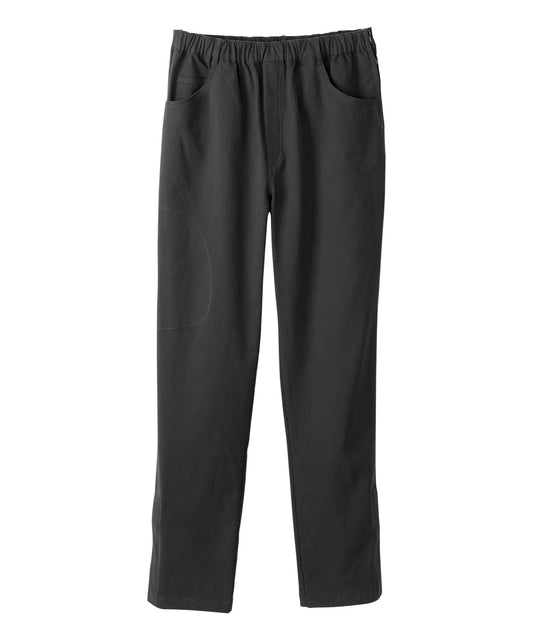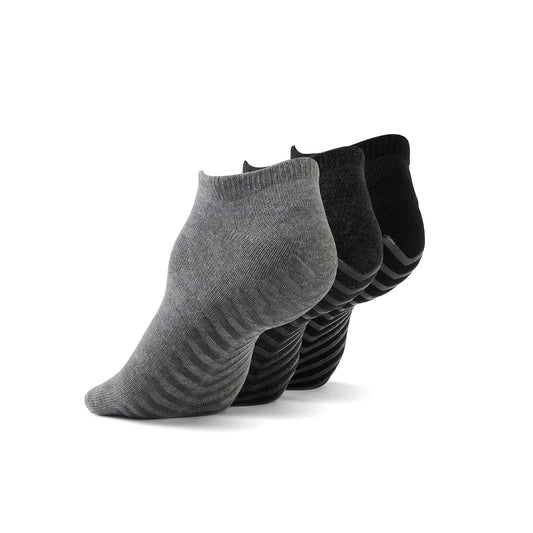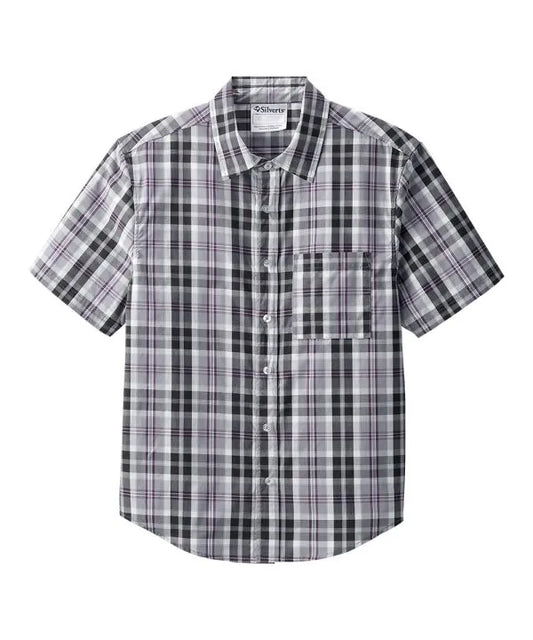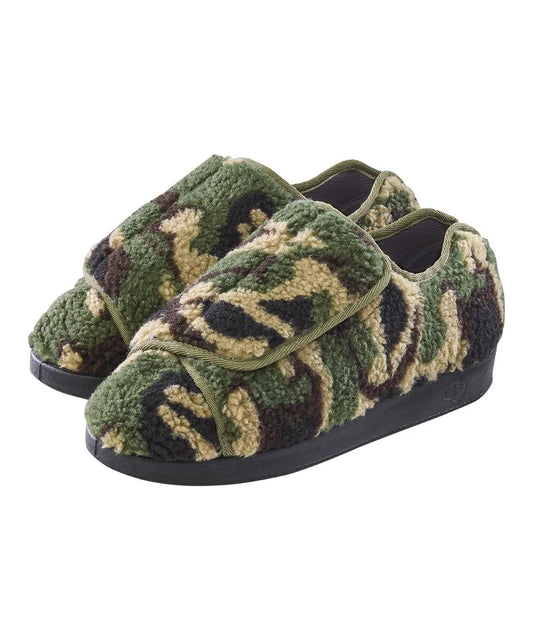Author: Ayesha Malhi
As we age, everyday tasks like getting dressed can become more challenging due to mobility limitations, arthritis, dementia, stroke recovery, or other age related conditions. But dressing doesn’t have to be a frustrating or exhausting experience. That’s where adaptive clothing comes in a game changer for seniors and caregivers alike.
Designed with function, comfort, and dignity in mind, adaptive clothing offers practical solutions for seniors who want to maintain their independence, stay comfortable, and feel confident every day.
In this article, we’ll explore:
-
What makes clothing “adaptive”
-
The top benefits of adaptive fashion for seniors
-
How to choose items that fit and flatter
-
The impact of adaptive clothing on quality of life
-
Where to shop for stylish and functional adaptive wear online
What Makes Clothing “Adaptive”?
Adaptive clothing is specifically designed for people who have difficulty dressing due to physical or cognitive limitations. Unlike standard clothing, adaptive garments include innovative features that make dressing easier without sacrificing style.
Common adaptive features include:
-
Magnetic closures or Velcro fastenings instead of buttons or zippers
-
Open back tops and dresses for easier dressing while seated or lying down
-
Side or front-access pants for those who use wheelchairs or have limited leg mobility
-
Extra wide neck openings, elastic waistbands, and easy pull on designs
-
Seamless or tagless interiors to reduce skin irritation
These features can be helpful for people with:
-
Arthritis or joint pain
-
Parkinson’s disease or tremors
-
Stroke recovery
-
Hip or knee replacement surgery
-
Alzheimer’s or other cognitive conditions
-
Limited range of motion or coordination
For caregivers, adaptive clothing reduces physical strain and helps preserve a senior’s dignity and comfort during assisted dressing.
Top Benefits of Adaptive Clothing for Seniors
1. Increased Independence
One of the most empowering aspects of adaptive clothing is the ability to dress independently. Seniors who may struggle with buttons or zippers due to arthritis or reduced dexterity can now manage on their own with magnetic fasteners or easy-on pants.


Check out June Adaptive’s Mens Short Sleeve Shirt with Magnetic Buttons and Men's Pants with Side Zipper are especially helpful for seniors who want to maintain autonomy.
2. Safer Dressing Experience
Adaptive clothing is designed to minimize risk of falls or joint strain. Garments with wide openings or side closures help seniors avoid bending, twisting, or standing on one leg movements that can be dangerous after a fall or surgery.
3. Comfort Without Compromise
Adaptive clothing uses soft, breathable, and stretchable fabrics to ensure maximum comfort all day. These garments are ideal for those with sensitive skin or who spend extended periods in a seated or reclined position.
4. Reduced Caregiver Strain
Adaptive clothing significantly reduces the physical effort required for dressing by caregivers. This is especially important in nursing homes, hospitals, and home care settings, where repetitive strain injuries are common.

Check out our Open-back clothing that allows for dignified assisted dressing with minimal lifting or pulling.
5. Stylish and Dignified Appearance
Gone are the days when adaptive wear looked like medical garments. Today’s adaptive clothing is fashion-forward, age-appropriate, and flattering. Seniors can dress well and feel confident, whether they’re attending a family gathering, going to a doctor’s appointment, or relaxing at home.
Finding Adaptive Clothing That Fits and Flatters
Fit matters especially for seniors who spend a lot of time sitting, have mobility aids, or are recovering from injury. Here are tips for choosing adaptive wear that feels as good as it looks:
✔ Prioritize Ease of Access
For seniors with limited mobility, clothing with open-back designs, wide armholes, or side closures makes dressing much easier. Those using wheelchairs often prefer garments with minimal back bulk and comfortable seated fits.
✔ Look for Soft, Non-Irritating Fabrics
Natural or stretchable materials like cotton, modal, and jersey knit reduce pressure on sensitive skin. Avoid tight elastics, bulky seams, or heavy fabrics that can cause overheating or discomfort.
✔ Consider Dressing Needs
Ask questions like:
-
Does the person dress independently or with help?
-
Are there post-surgical needs or mobility aids involved?
-
Is toileting access an issue?
June Adaptive offers clothing tailored to various needs—from hip replacement recovery to Parkinson’s-friendly options.
✔ Choose Colors and Styles They Love
Maintaining a sense of personal style boosts morale. Choose clothing in their favorite colors or patterns. Adaptive wear doesn't have to look “different”—and with brands like June Adaptive, it doesn't.
One customer favorite is the women’s magnetic closure blouse with floral prints—it’s easy to wear and makes a statement.
How Adaptive Clothing Can Improve Quality of Life
Adaptive fashion isn’t just about convenience. It’s a holistic tool for well-being, affecting a senior’s physical, emotional, and psychological health.
-
Encourages Confidence and Dignity
Wearing clothes that look good and feel comfortable helps seniors feel more like themselves, especially during times of health change or dependency. Adaptive clothing restores a sense of normalcy and pride in appearance.
-
Supports Social Engagement
Seniors who feel confident in what they’re wearing are more likely to engage in social activities. Adaptive garments make it easier to attend outings, family events, or religious services without worrying about dressing struggles.
-
Promotes Better Daily Routines
When dressing becomes simple, mornings go more smoothly, for both seniors and caregivers. Fewer delays, less stress, and more energy for meaningful activities.
-
Reduces Pain and Discomfort
By eliminating the need for uncomfortable motions, adaptive clothing helps reduce joint stress, back pain, and muscle fatigue, making daily dressing a more positive experience.
Where to Shop for Adaptive Clothing Online
Finding the right adaptive clothing shouldn’t be a hassle. At JuneAdaptive.com, you’ll find thoughtfully designed collections for women and men that prioritize comfort, safety, and personal style.
Why shop at June Adaptive?
-
Curated by people with lived caregiving and recovery experience
-
Focus on fashion-forward, age-appropriate designs
-
Easy returns and detailed sizing guides
-
Inclusive options for dementia care, post-surgery recovery, and wheelchair users
Dressing for Specific Conditions: Tailored Adaptive Solutions
Adaptive clothing can be even more effective when tailored to specific conditions or medical needs. Understanding the unique challenges faced by seniors with certain diagnoses can help you choose the best garments for comfort, safety, and dignity.
-
Dressing with Arthritis
Seniors with arthritis often experience joint stiffness in the fingers, shoulders, and knees, making traditional buttons, zippers, and tight cuffs painful or impossible to manage.
Recommended features:
-
Magnetic closures or Velcro fastenings instead of buttons
-
Easy pull pants with elastic waistbands
-
Soft, stretchy materials that don’t require force to move into
-
Dressing with Dementia or Alzheimer’s
For individuals with cognitive decline, dressing can become a confusing or frustrating task. Clothing with familiar textures, calming colors, and simplified designs can help ease anxiety and promote routine.
-
Dressing After Stroke or Surgery
Post-surgery seniors often need clothing that avoids certain movements—like raising arms, bending at the waist, or standing for long periods. Those recovering from hip or shoulder surgery may also need help dressing safely while seated.
June Adaptive’s post-surgical wear collection is perfect for recovery from hip replacement, shoulder surgery, and mobility restrictions.
Real Stories: How Adaptive Fashion Is Changing Lives
Betty, 78 – Living with Parkinson’s
“I used to dread getting dressed each morning. My hands would shake, and I’d get frustrated trying to button my blouse. My daughter bought me a few magnetic tops from June Adaptive, and now I can dress myself again. It feels amazing to start my day without stress.”
John, 83 – Stroke Recovery at Home
“After my stroke, I couldn’t use my left side. My wife had a hard time helping me dress, and I felt like a burden. The open-back shirts and side-zip pants from June Adaptive changed everything. I can get dressed while sitting down, and my wife doesn’t struggle anymore.”
Maria, 72 – Caring for Her Husband with Alzheimer’s
“My husband would get upset when I tried to help him dress. He didn’t like how ‘hospital-like’ his clothes felt. We tried June Adaptive’s memory-care clothing, and now he wears soft clothes that look like his old wardrobe, but with easy fasteners. He’s more cooperative, and I feel more at peace.”
These testimonials reflect a larger truth: adaptive clothing can restore confidence, independence, and joy. It’s more than just clothing: it’s a meaningful support system woven into everyday life.
Final Thoughts: Dressing Shouldn’t Be a Daily Challenge
Aging with dignity includes being able to wear clothes that are comfortable, easy to manage, and look good. Whether you’re a senior adapting to new physical needs or a caregiver searching for practical clothing solutions, adaptive fashion offers freedom and peace of mind.
At June Adaptive, we believe dressing should support not hinder your lifestyle. With thoughtful design, accessible features, and flattering styles, you or your loved one can feel ready to take on the day, one easy outfit at a time.
Ready to Make Dressing Easier?
Visit JuneAdaptive.com to explore our full collection and make everyday dressing a simple, comfortable, and empowering part of your routine. Check out our latest blog The Ultimate Guide to Choosing the Right Long-Term Care Facility for Your Loved One.















